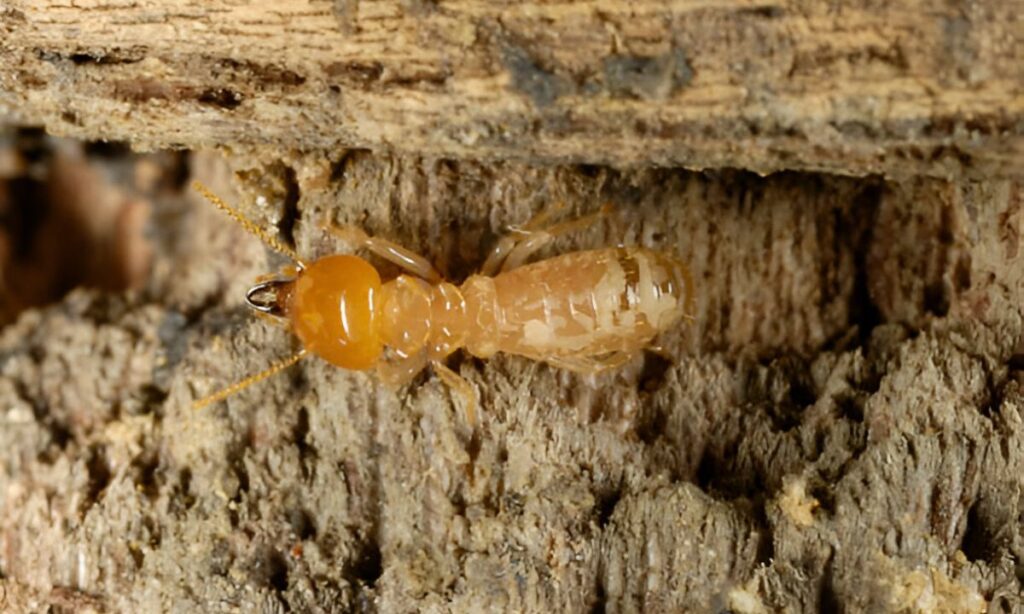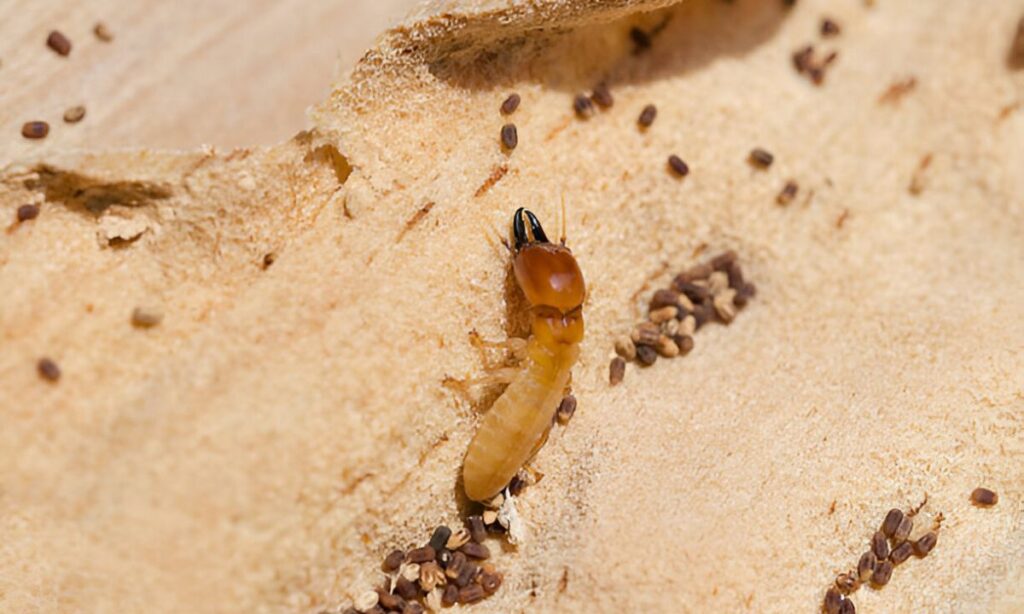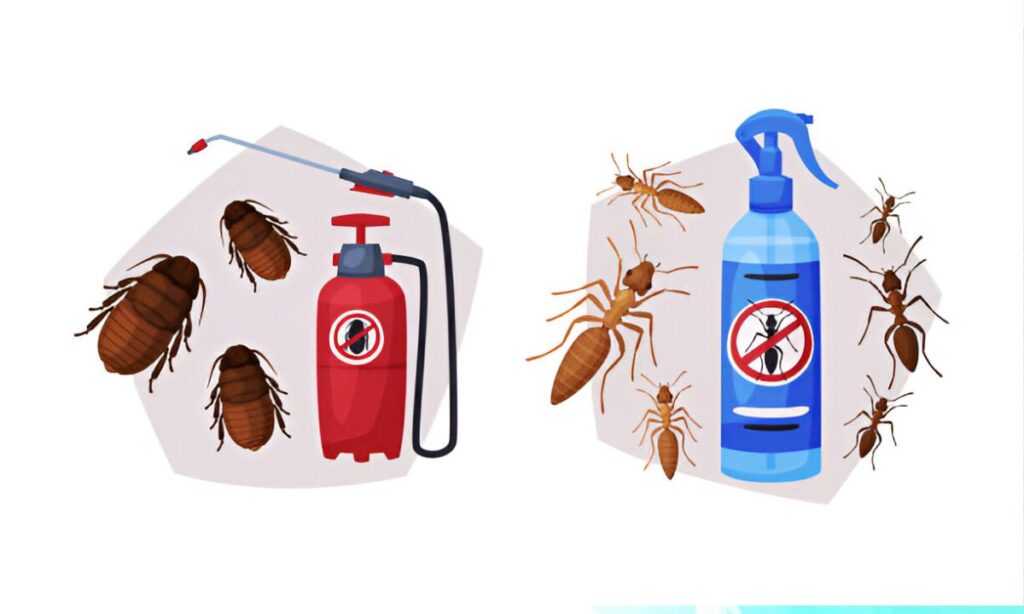Termites are often referred to as “white ants,” a significant problem in Australia because of the country’s warm and humid climate, which provides an ideal environment for these pests. Getting rid of termites in Australia requires a strategic approach, as the country has a termite-friendly climate. Effective termite control involves identifying the type of termites, implementing preventive measures like using barriers and reducing moisture, and applying appropriate treatments like baiting systems, termiticides, or professional pest control services. Regular inspections and ongoing maintenance are crucial to protecting your property from these destructive pests and preventing infestations.
Understanding the process of getting rid of termites

Australia’s humid and warm climate provides an ideal environment for termites. They can cause extensive damage to wooden structures and buildings, which makes it crucial to manage and eliminate them effectively. Here is an in-depth guide on how to get rid of termites in Australia. You should check it out below:
Signs of Termite Infestation
Signs of termite infestation include mud tubes on walls, hollow-sounding wood, termite droppings (frass), winged swarmers emerging after rain, and damaged or distorted wood surfaces indicating hidden damage.
Mud tubes
Termites build mud tubes to travel for food sources and between their colonies. These tubes are often found on walls, wooden structures, and foundations.
Hollow Wood
Tap on wooden surfaces to detect termite damage. If the wood sounds hollow, it may indicate that termites have consumed it from the inside, signaling a potential infestation that needs further inspection.
Frass
Termite droppings, or frass, resemble small, wood-colored pellets and are a telltale sign of an infestation. These droppings are often found near affected wood and can indicate active termite activity.
Swarmers
Seeing winged termites (alates) in large numbers, particularly after rainfall, suggests a mature termite colony is nearby. Their emergence indicates the presence of a well-established infestation.
Damaged Wood
Distorted, warped, or cracked wood surfaces may indicate termite damage. These signs suggest that termites have compromised the wood structure, leading to structural issues and potential long-term damage.
Prevention Measures
Prevention measures involve proactive steps to avoid issues before they arise. This includes regular inspections, addressing potential problem areas, and implementing protective strategies to safeguard your property.
Regular inspection
Schedule an annual professional inspection of your home, even if no issues are apparent. Early detection of potential problems can prevent costly damage and ensure your property remains in optimal condition
Reduce moisture
Repair leaking taps, air conditioning units, and pipes promptly to prevent water accumulation, which attracts termites. Ensure proper drainage around your home to direct water away from the foundation and reduce moisture levels. This proactive maintenance helps protect your property from termite infestations.
Remove wood-to-ground contact
Prevent termite infestation by avoiding direct contact between wood and soil. Instead, use metal or concrete barriers to create a protective separation. This measure helps reduce the risk of termites accessing wooden structures from the ground, safeguarding your property from potential damage.
Ventilation
Ensure proper ventilation in attics and basements to effectively reduce moisture levels. Adequate airflow helps prevent the buildup of excess humidity, which can lead to mold growth and structural issues. Install vents or fans and regularly check for blockages to maintain a dry and healthy environment.
Barrier treatments
Apply chemical barriers around the foundation of your home to create a protective shield that prevents termites from entering. This involves treating the soil with termiticides to form a continuous barrier that repels and kills termites, safeguarding your property from potential infestations and damage.
Identification of termites
It’s crucial to identify the type of termite infestation before taking any action. Australia is home to several species of termites. They are:
Subterranean termites
The most destructive and prevalent termite species are subterranean termites, which live in extensive colonies underground. These termites can cause significant structural damage as they forage for food, often going unnoticed until serious damage has occurred. Their underground colonies can be vast, making them particularly challenging to manage and control.
Drywood termites
Drywood termites are commonly found in dry, seasoned wood such as that used in attics, furniture, and wooden trim. Unlike subterranean termites, they do not require contact with the soil and can infest furniture or structural timbers, making them particularly challenging to detect and manage.
Dampwood termites
Dampwood termites thrive in moist, decaying wood, which is typically found in poorly ventilated areas such as basements, crawl spaces, or areas with water leaks. These termites prefer wood with high moisture content and can cause significant damage if not promptly addressed.
Professional Inspection
It’s advisable to get a professional pest inspection if you suspect a termite infestation. Licensed pest controllers can identify the extent of the infestation and the type of termites, which is important for effective treatment.
Treatment options
There are several methods to treat a termite infestation, ranging from DIY solutions to professional treatments:
Chemical Treatments (Termiticides)
Chemical treatments involve using specialized products like termiticides and barrier treatments to create a protective zone around your home, targeting termites effectively and preventing their entry.
Barrier treatments
Liquid termiticides are applied in a trench around your home or injected into the soil to create a chemical barrier that termites cannot cross.
Termite Dusts and Foams
Applied directly into active termite areas, these substances are carried back to the colony by the termites themselves, spreading the poison.
Baiting systems
Termite baits are strategically placed around your property. Termites consume the bait and carry it back to their colony, where it gradually kills the population.
Physical Barriers
Physical barriers, such as stainless steel mesh and granite particles, are effective termite prevention methods. These barriers create an impenetrable shield around structures, deterring termites from entering.
Stainless Steel Mesh
Installed around foundations and key entry points during construction, this physical barrier effectively blocks termites from accessing your home, offering crucial protection against infestations.
Granite Particles
Granite particles are highly effective in termite prevention due to their weight and density, making them impossible for termites to move, thus forming a robust barrier to protect your property from infestations.
Biological Control
Biological control involves using natural predators or organisms to manage pest populations. For termites, this can include introducing nematodes, microscopic worms that prey on termites, or applying fungi like Metarhizium anisopliae to infect and kill them. It’s an eco-friendly method that complements other pest control strategies.
Nematodes
These microscopic worms are natural predators of termites. They can be introduced into the soil where termites are active. However, they are most effective in small, contained areas.
Fungal infections
Some fungi, like Metarhizium anisopliae, can be used to infect and kill termites. These biological control agents are less commonly used, but they can be part of an integrated pest management plan.
Heat Treatment
Heat treatment is a pest control method that involves raising the temperature in an affected area to lethal levels, effectively eliminating pests like termites and bedbugs without the need for chemical treatments.
Heat Tenting
Heat treatment can be effective for localized infestations, especially in furniture or structural timbers. The affected area is sealed off, and the temperature is raised to a level lethal to termites (around 50–60 °C) for several hours.
Microwave Treatments
This method uses microwaves to generate heat within the wood, killing termites inside. It’s particularly useful for drywood termite infestations.
Cold Treatment
Cold treatment involves using methods like liquid nitrogen to freeze and eliminate pests such as termites. This eco-friendly technique is applied by professionals in specific cases to target infestations effectively.
Liquid Nitrogen
Liquid nitrogen can be used to freeze termites inside the wood in some cases. This method is less common and is usually applied by professionals in specific situations.
Legal and Environmental Considerations
Consider legal and environmental factors when addressing issues like pest control, ensuring compliance with regulations, protecting wildlife, and choosing eco-friendly solutions that minimize harm to the environment.
Compliance with Regulations
Pest control operators must be licensed in Australia. Ensure that any professional you hire is fully licensed and compliant with state regulations.
Environmental Impact
Be aware of the environmental implications of using chemical treatments. Some chemicals can be dangerous for pets, wildlife, and the environment.
Dealing with an Infestation in a Rental Property
Managing an infestation in a rental property requires prompt reporting to the landlord, maintaining detailed records, and ensuring proper pest control measures are taken to resolve the issue while protecting your rights.
Notify the landowner.
Immediately report any signs of termites to your landlord if you’re renting, as they are responsible for addressing pest problems and ensuring proper measures are taken to protect the property
Keep Records
Keep detailed records of all reports made to the landlord and the actions taken to address the issue, ensuring you have a clear history of communication and efforts to resolve the problem for future reference.
Special Considerations for Heritage and Timber Homes
Heritage and timber homes require special care during maintenance and repairs. Seek professionals with experience in preserving historical integrity while addressing issues like termite damage, moisture, and wear.
Sensitive treatments
Heritage buildings often require special care. Consult with specialists who have experience treating termite infestations in heritage-listed or timber homes.
Regular Maintenance
Older buildings are more susceptible to damage, making regular inspections and timely repairs essential for maintaining structural integrity and preventing potential issues from worsening over time.
Common Mistakes to Avoid

Here’s a brief overview of common mistakes to avoid when getting rid of termites. Avoiding these mistakes will help you ensure effective termite control and prevent infestations.
- Ignoring early signs, like mud tubes or damaged wood, can lead to severe infestations.
- DIY treatments without professional help often result in incomplete eradication.
- Not addressing moisture issues can attract termites even after treatment.
- Using ineffective treatments can cause termites to spread or survive.
- Skipping follow-up inspections can allow termites to return.
- Neglecting nearby trees, wood piles, or stumps can lead to re-infestation.
Pro Tips: If you need any help Please visit our TERMITE CONTROL SERVICE IN PERTH, AUSTRALIA.
Conclusion
Termite management in Australia requires a proactive approach that includes both prevention and treatment. Moisture control, regular inspections, and the use of termite-resistant materials can help prevent infestations. A combination of chemical, biological, and physical treatments may be necessary to eliminate the colony and protect your home. Engaging a licensed pest control professional is often the best course of action, especially for severe infestations. You can effectively manage termites and safeguard your property against these destructive pests by staying vigilant and following best practices.
Read More: Explore Australia’s Fascinating Spider Diversity!

